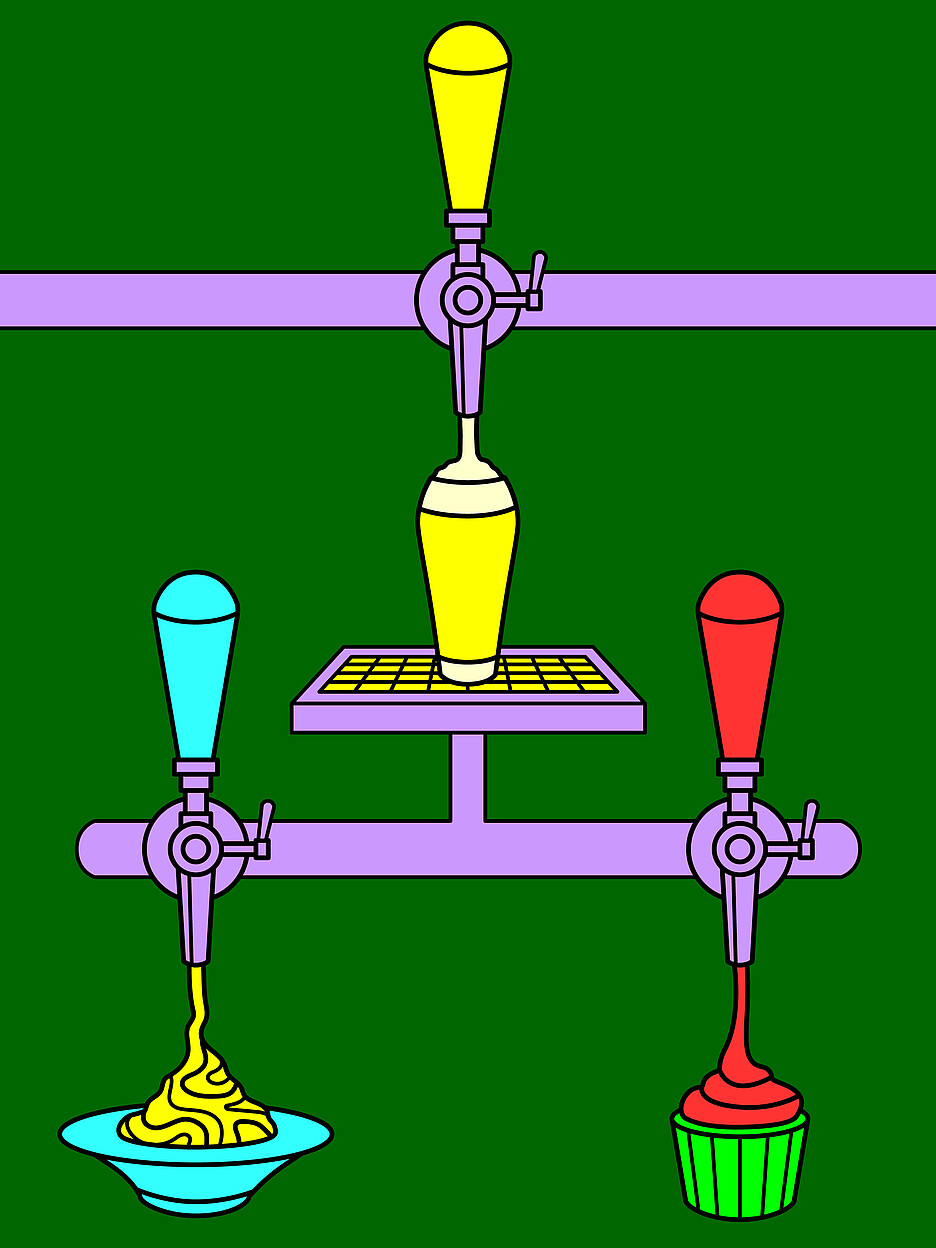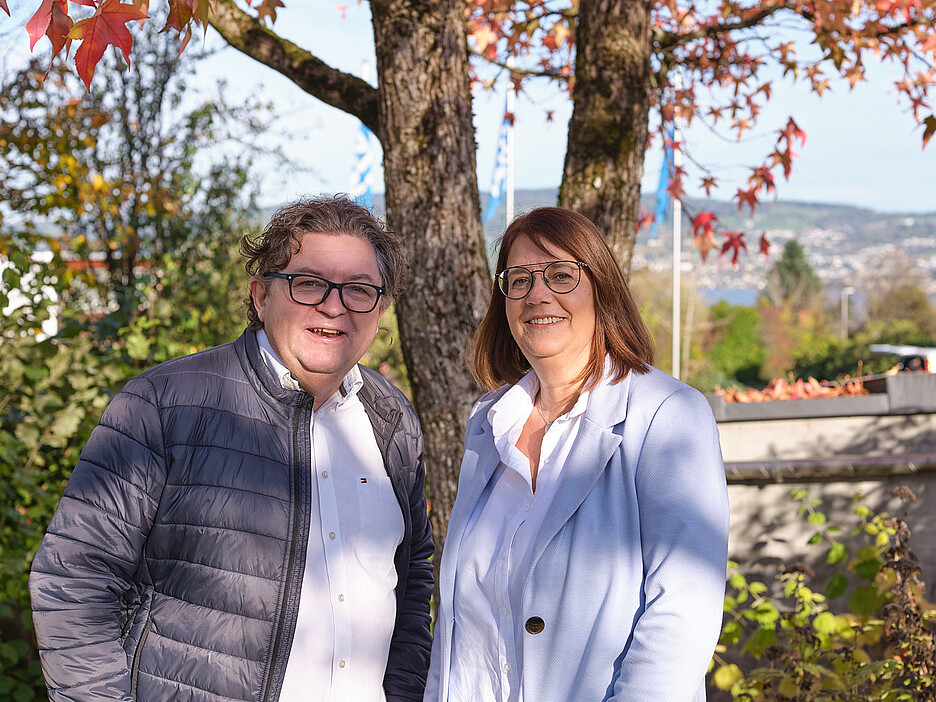Planetary Health – episode 2: New thinking for new food
While spent grain was once considered a waste product, resourceful breweries are now using it to make pizzas or biscuits. This means that more of the valuable substances produced during the brewing process are used and waste is avoided. In order for by-products to be transformed into main products, completely new strategies for circular food production are needed – in order to protect our planet.
When enjoying a beer with friends after work, hardly anybody stops to think about the malt residue produced during the brewing process. Despite the valuable components contained within this by-product, which is referred to as spent grain, it has so far at best been used to produce biogas or animal feed. Increasingly, however, upcycling is taking place. In order to make use of the nutritionally valuable components found in the spent grain, which include dietary fibres, proteins and minerals, it is also being used to produce bread, pasta, biscuits and bars.
From a by-product once considered waste...
Until now, the processing of these so-called side streams to foodstuffs had frequently been considered uninteresting. The reasons for this were that the process was both too energy-intensive and costly. This is because these by-products often have to be thermally preserved or otherwise processed before they can be made into food.
... to valuable food
As with spent grain, completely new strategies are therefore required in order to transform supposedly inferior by-products directly into valuable main products that allow for people to be fed and the environment to be protected. This will necessitate effective, regenerating and self-sustaining closed-loop systems.

Nature provides examples of such systems: in a living biological system, there is a continuous exchange of substances that allows for growth, utilisation, decay or regeneration, adaptation and development. A circular exchange of substances makes it possible to regenerate molecules and components, thus preserving the entire system. A characteristic feature of regenerative systems is that they are embedded as sub-systems within other systems.
Nature as a role model
The “forest” ecosystem is a particularly good illustration of this: trees absorb carbon dioxide from the air and release oxygen, while at the same time extracting water and nutrients from the soil. The process of photosynthesis allows trees to grow, regenerate, adapt and develop. The oxygen produced during photosynthesis enables other living beings to exist. The leaves and branches that die and fall from the trees feed the soil with organic material that serves as a source of food for microorganisms and insects. These organisms in turn decompose the organic matter and release nutrients into the soil that can be taken up and utilised by the trees and other plants. Ultimately, there is a circular exchange of substances between the trees, the soil, the microorganisms and the air that allows for the entire ecosystem to be maintained. The “forest” ecosystem, for its part, is a sub-system of the larger system of the earth’s biosphere.
Circular and future-friendly
Regenerative food production should also function in the same way as these biological systems: the cycle begins with the sustainable agricultural production of raw materials. During the processing of these raw materials and the creation of value from all streams, the focus is then placed on direct utilisation for human nutrition as well as on preventing food waste and reducing the consumption of energy and other resources – which should of course also come from regenerative sources. The business model should be long term in nature, circular and thus future-friendly.
In concrete terms, it could look something like this: Regenerative agricultural processes actively promote the microbiome in the soil, for example by employing various outdoor cultivation measures such as the rotation of crops on different production areas. Soil life, in turn, is key for increasing healthy yields and boosting biodiversity.
Cell cultures as a means of averting production errors
Cell cultures that can be used specifically for the production of food are a further conceivable measure here. The cells for proliferation are taken from the plants’ original tissue, using the cocoa bean for example – and are transferred to a stock culture without undergoing genetic modification. The cultures are then proliferated in a special tank that allows the environmental conditions to be adjusted. The temperature, gas content, mechanical movement, light and other factors can all be precisely monitored and controlled in this system. The nutrient sources for these cultures come from local agriculture. The production process is much more controllable than is the case in systems in which pesticide and fertiliser use are the rule and weather influences are unpredictable.
This enables more of the goodness of the plant to be made available for human consumption while reducing the consumption of resources. Production errors coupled with food waste and side streams are then the exception – all the streams become main streams. In addition, the cells could be cultivated close to where refinement takes place.
From rivals to partners
Ultimately, regenerative food production will also require new business models and cooperations. One-time rivals could become partners at a joint production site. In such a scenario, one of the business partners would then, for example, process the liquid main stream into plant-based drinks, while the other business partner would process the solid main stream into plant-based meat alternatives or baked and pasta products.
Those meeting for a beer with friends after work are then able to savour the brewery pizza containing healthy ingredients from the spent grain. Regenerative food production ensures that food can be enjoyed with a clear conscience.

About the authors
Thinking and writing the unexpected is the motto of Gisela and Tilo Hühn, while their concept of life is underpinned by the endeavour to act responsibly together, adopt a reflective approach and make a difference. They work as researchers and lecturers at the ZHAW: Gisela Hühn as a member of the Food Process Development Research Group and Tilo Hühn as Head of the Centre for Food Composition and Process Design. Whether they are at the university or sat around their kitchen table, both enjoy joining forces or collaborating with others to discuss and work on future food systems and the question of how to get more of the goodness out of agricultural products during processing.

The Planetary Health series in the Impact web magazine
Can our planet still be saved? And if it can, how? These are the questions addressed in the new “Planetary Health” series of the ZHAW’s “Impact” web magazine. As the content of the series was not set in stone at the outset, you—our readers—also have the opportunity to shape the path it takes and the issues it covers by sharing your suggestions and wishes. In the opening episodes of the series, ZHAW researchers Gisela and Tilo Hühn explain how we can save the world with food. Episode 1 looked at why food chains have to become food networks and why sustainability is no longer enough, with the time now having come to repair our natural systems. The insights the researchers provide are by no means a light bite. Instead, they serve up a feast of information, detailing what is wrong with our food system and what negative impacts it has on the environment. While they don't offer any guaranteed recipes for ensuring our planet’s recovery, they plate up morsels of knowledge and brain food aimed at promoting further thought and discussion. After all, “the battle to save the planet will be won at our dinner tables.” There is still a long way to go before we can sit back and enjoy a well-deserved dessert.
We look forward to receiving your ideas and suggestions at zhaw-impact@zhaw.ch
0 Comments
Be the First to Comment!